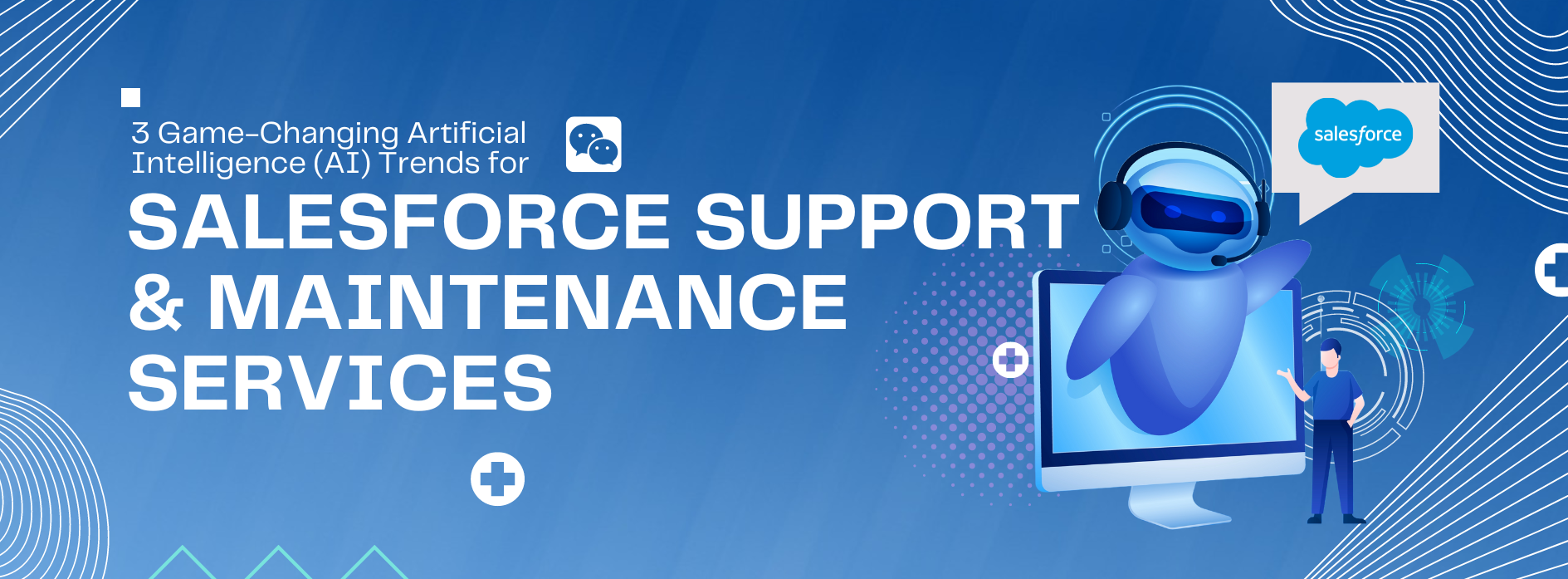The world belongs to big data, and its management is not everyone’s cup of tea. It requires meticulous skills, precision in experience, and know-how of successful Salesforce implementation. One of the biggest challenges a company may face while enjoying Salesforce consulting services, is the need for data migration.
Data migration in the Salesforce environment is a tricky task. It needs focused planning and proper strategies. To make things simpler, data migration tools come into the play.
Before moving ahead and discussing this Salesforce data migration tool, let’s understand what is Salesforce data migration.
Salesforce Data Migration – What and Why?
Salesforce data migration is the process of transferring data from one system to Salesforce, ensuring a seamless transition and maintaining data integrity. Whether you are migrating from a legacy system, another CRM platform, or even Excel spreadsheets, well-executed data migration is crucial for a smooth Salesforce implementation.
The data migration process helps users in data cleansing and optimization. Join us on this informative journey as we demystify Salesforce data migration, empowering you with the knowledge and insights needed to navigate this complex process. Discover how to avoid common pitfalls, optimize data quality, and set a strong foundation for leveraging the full potential of Salesforce.
Why is Data Migration Necessary in Salesforce?
To create a single source of truth for customer data
Salesforce is a powerful CRM platform, but it can only be as good as the data that it contains. By migrating all of your customer data to Salesforce, you can create a single source of truth for your customers, which will make it easier to track their interactions with your business and make informed decisions about your marketing and sales strategies.
To improve the efficiency of your sales and customer service operations
When all of your customer data is in Salesforce, it is much easier to access and use. This can help you to improve the efficiency of your sales and customer service operations by reducing the time that your employees spend searching for information and by making it easier to track customer interactions.
To enable data-driven decision-making
Salesforce provides a wealth of data about your customers, but this data is only useful if you can access and analyze it. By migrating your customer data to Salesforce, you can make it easier to track and analyze customer behavior, which can help you to make more informed decisions about your marketing, sales, and customer service strategies.
To comply with regulations
Many industries are subject to regulations that require businesses to keep certain types of customer data. By migrating your customer data to Salesforce, you can make it easier to ensure that your business is compliant with these regulations.
Increased visibility into customer data
When all of your customer data is in Salesforce, you can get a 360-degree view of your customers. This can help you to understand their needs and preferences better, which can lead to improved customer satisfaction.
Improved customer engagement
By using Salesforce to track customer interactions, you can identify opportunities to engage with customers more effectively. This can lead to increased sales and improved customer loyalty.
Reduced costs
By automating many of the tasks involved in data migration, you can save time and money. This can free up your team to focus on other important tasks, such as improving customer service.
If you are considering migrating your data to Salesforce, there are a few things you need to keep in mind. First, you need to make sure that your data is in a format that can be imported into Salesforce. Second, you need to decide how you want to migrate your data. There are a number of different methods available, including manual migration, automated migration, and cloud-based migration. Finally, you need to test your data migration to make sure that it is successful.
If you are not sure where to start, there are a number of resources available to help you such as certified Salesforce professionals and Salesforce consulting partners.
Types of Salesforce Data Migration Tools
There are different types of Salesforce data migration tools available, each with its own strengths and weaknesses. These tools are classified into three broad categories:
Built-in tools
Salesforce provides a number of built-in tools that can be used to migrate data, including the Salesforce Data Loader, the Salesforce Data Import Wizard, and the Salesforce Inspector. These tools are easy to use and can be a good option for small-scale data migrations.
Third-party tools
There are a number of third-party tools available that can be used to migrate Salesforce data. These tools offer a wider range of features than built-in tools, and they can be a good option for large-scale or complex data migrations. Some of the most popular third-party Salesforce data migration tools include Jitterbit Data Loader, Dataloader.io, and Informatica PowerCenter.
Cloud-based tools
There are also a number of cloud-based Salesforce data migration tools available. These tools are hosted in the cloud, so they can be accessed from anywhere. They are also a good option for businesses that do not have the resources to set up and maintain their own data migration infrastructure. Some of the most popular cloud-based Salesforce data migration tools include MuleSoft Anypoint DataMapper, Boomi AtomSphere, and SnapLogic.
Salesforce Data Migration – The Best Practices
When it comes to Salesforce data migration, adopting best practices is crucial for a successful and seamless transition. Migrating data to Salesforce requires careful planning and meticulous execution
As a Salesforce Gold Consulting Partner, We have a deep understanding of the platform’s capabilities. By following industry best practices, you can help you mitigate risks, maintain data integrity, and optimize the value of your Salesforce implementation.
Plan and prepare your data
Before you start migrating your data, you need to make sure that it is in a format that can be imported into Salesforce. This means cleaning up your data, removing any duplicate or corrupted records, and ensuring that all of the fields are in the correct format.
Choose the right migration tool
There are a number of different Salesforce data migration tools available, so you need to choose one that is right for your needs. If you have a small amount of data, you may be able to use the built-in Salesforce Data Loader. However, if you have a large amount of data or a complex data migration project, you may need to use a third-party tool.
Test your data migration
Once you have chosen a migration tool and prepared your data, you need to test your data migration to make sure that it is successful. This means running a few test migrations with a small amount of data to make sure that the tool is working correctly.
Migrate your data in phases
If you have a large amount of data, it is best to migrate it in phases. This will help to reduce the risk of any problems occurring during the migration.
Monitor your data migration
Once you have started migrating your data, you need to monitor the process to make sure that it is going smoothly. This means checking the progress of the migration and looking for any errors.
Clean up your data after the migration
Once the migration is complete, you need to clean up your data to remove any duplicate or corrupted records. This will help to ensure that your data is accurate and up-to-date.
Get help from a Salesforce consulting company
If you are not sure how to migrate your data, you can get help from a Salesforce consulting company. These companies have the expertise and experience to help you with your data migration project.
Use Salesforce migration services
There are also a number of Salesforce migration services available. These services can help you to migrate your data quickly and easily.
Wrapping Up
Salesforce data migration services play a vital role in ensuring a smooth and successful transition to the Salesforce platform. Throughout this blog, we have explored the benefits, tools, and best practices associated with Salesforce data migration.
It is evident that proper planning, adherence to best practices, and leveraging the right tools are essential for a seamless and efficient data migration process.
Salesforce data migration services, when executed with precision and following the best practices, enable organizations to seamlessly transfer their data to Salesforce and leverage its robust features. By partnering with a reputable Salesforce consulting company, businesses can access expert guidance, tools, and expertise to achieve a successful data migration.
Embark on your Salesforce journey with confidence, knowing that proper data migration will empower your organization to harness the full potential of Salesforce and drive business growth.
For professional Salesforce data migration services and support, reach out to our experienced team at FEXE – Salesforce Gold Consulting Company. Let us assist you in achieving a seamless transition to Salesforce and optimizing your data management processes.









